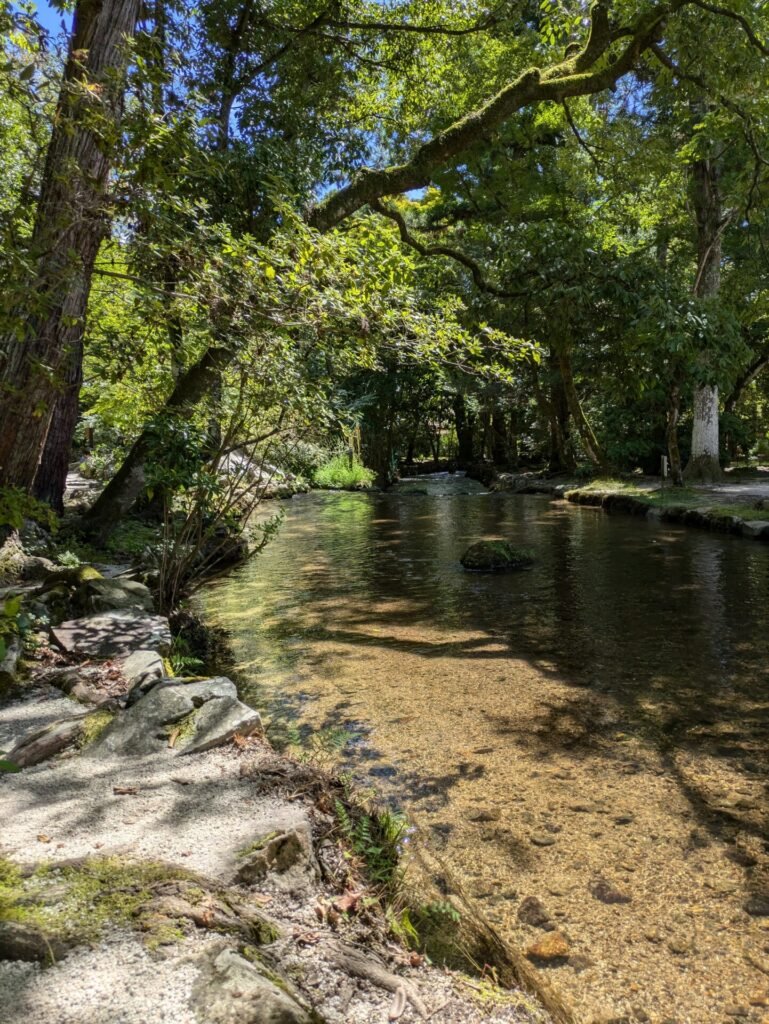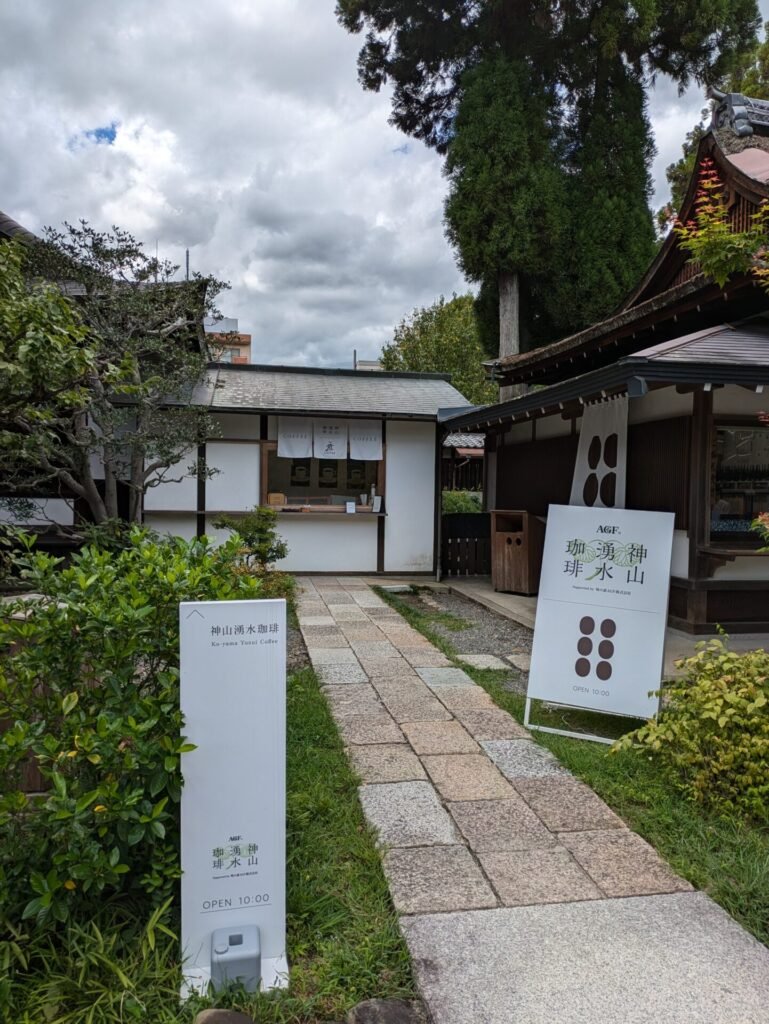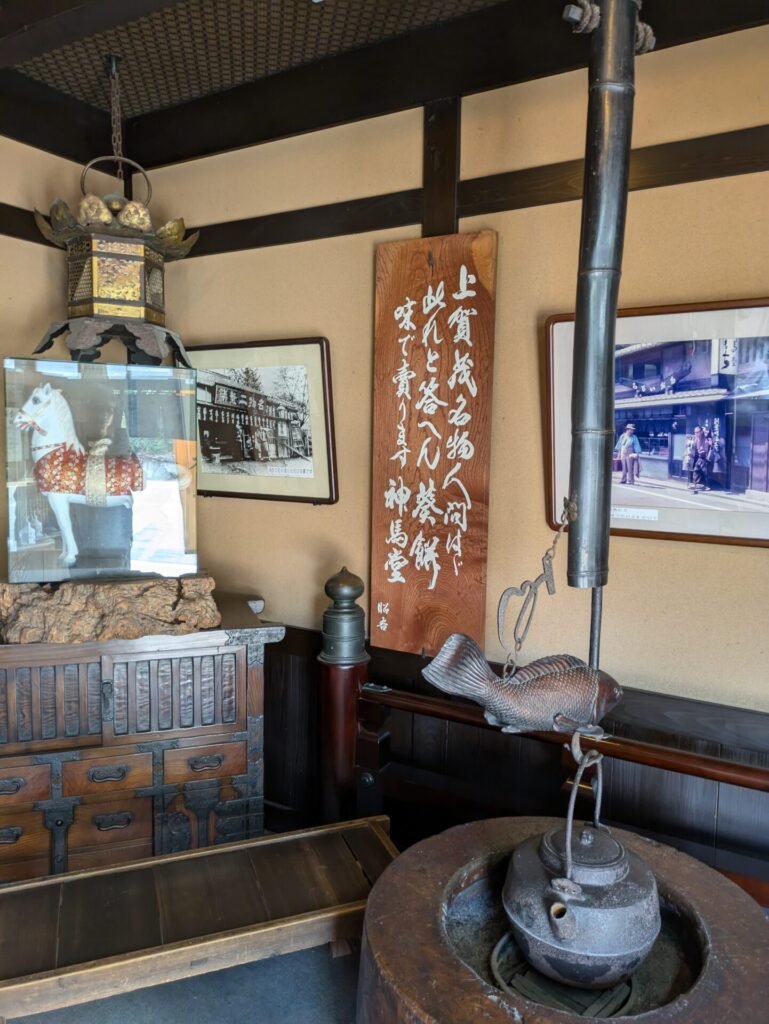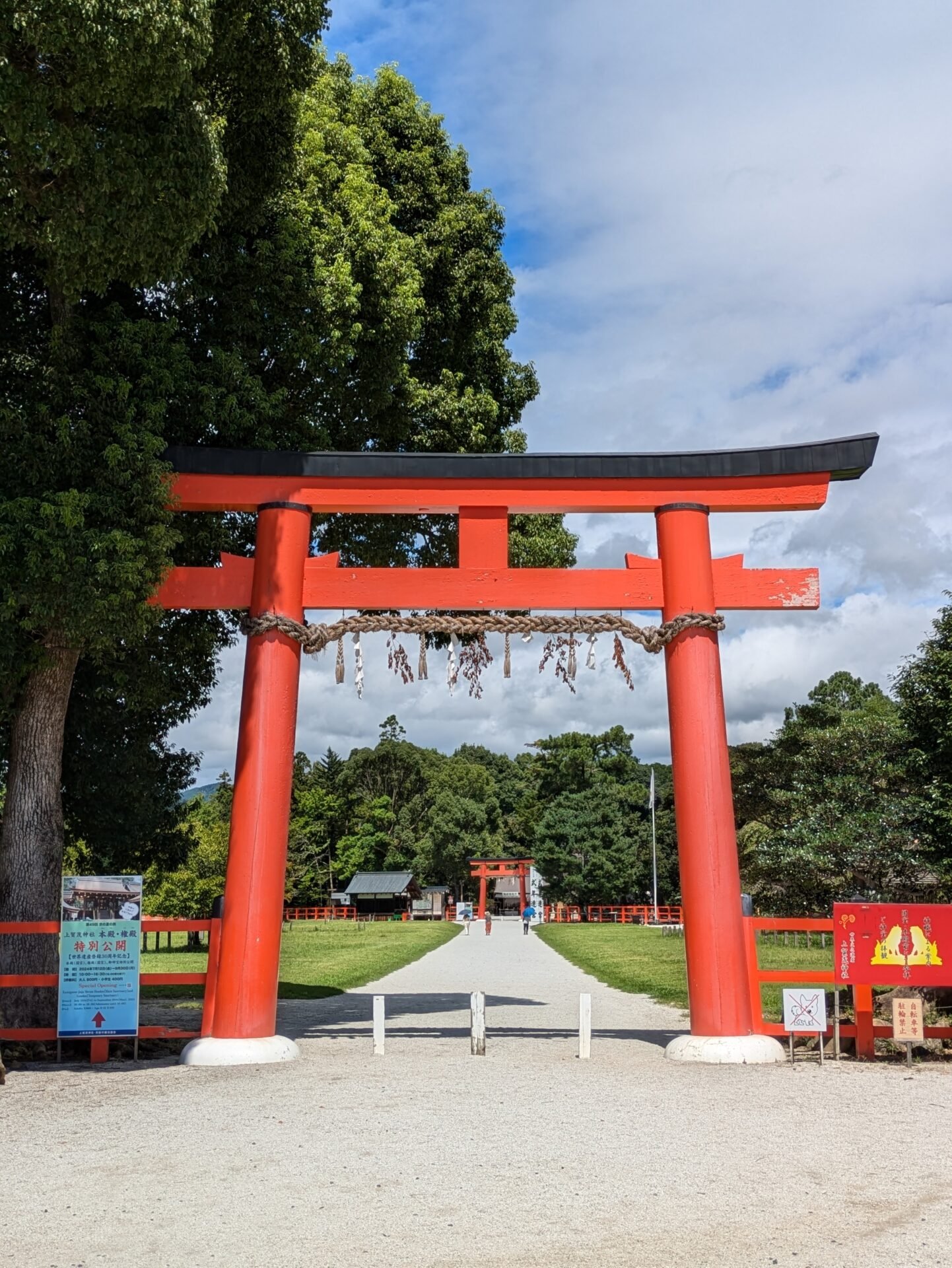Kamigamo Shrine: One of Kyoto’s Oldest Shrines
Kamigamo Shrine, officially known as Kamo-wakeikazuchi Shrine, is a prominent Kyoto shrine recognized as a World Heritage Site. Dedicated to the deity Kamo-wakeikazuchi no Oomikami, it has long been revered as a god of protection against misfortune, disaster prevention, and certain victory. Its majestic appearance and rich natural surroundings continue to leave a deep impression on visitors.

Weaving 2600 Years of History: The Birth and Development of Kamigamo Shrine
The origins of Kamigamo Shrine date back over 2600 years. It is said to have begun when the deity “Kamo-wakeikazuchi no Oomikami” descended on Mount Kōyama, about 2 kilometers north-northwest of the main shrine. The current shrine buildings were established in 678, making it one of the oldest shrines in Kyoto.
The name “Wakeikazuchi” means “a god with power strong enough to split thunder,” and the awe and respect for this mighty power have been passed down through its long history.
In 1994, the entire shrine precinct was designated as a World Heritage Site as part of the “Historic Monuments of Ancient Kyoto,” internationally recognizing its cultural and historical value.
Harmony of Mystery and Nature: Highlights of Kamigamo Shrine
The charm of Kamigamo Shrine lies in the harmony between its solemn atmosphere and rich natural environment. Visitors are first greeted by an impressive large torii gate at the entrance of the shrine. This gate symbolizes the entrance to a sacred realm, giving the sensation of stepping into another world as you pass through. Beyond the torii, the contrast between the vast lawn and gravel paths comes into view. This landscape beautifully creates a sacred space removed from everyday life, calming the hearts of visitors.

As you walk through the grounds, you’ll notice a small stream called “Nara-no-ogawa.” This stream creates a rich natural scenery and produces a refreshing atmosphere, especially during the summer months. Surrounded by the murmur of the stream and the surrounding greenery, you can forget the bustle of the city and experience a pleasant tranquility.

The appeal of Kamigamo Shrine is found not only in its historical and cultural value but also in its fusion with modern elements. There’s a café on the grounds that uses water from Mount Kōyama, where you can enjoy coffee, green tea, and hojicha. Sitting on a bench in the shade, enjoying the aroma of your drink while contemplating the long history of Kamigamo Shrine is one of the highlights of the trip.



The landscape of Kamigamo Shrine, woven by these elements, allows visitors to experience both a mystical atmosphere and natural beauty simultaneously. Moreover, you can enjoy the changes throughout the four seasons, making new discoveries with each visit. Kamigamo Shrine shows different faces throughout the year – cherry blossoms in spring, lush greenery in summer, vibrant autumn colors, and snow-covered scenery in winter – continuing to captivate many people year-round.
Access to Kamigamo Shrine
Kamigamo Shrine is located in Kita Ward, Kyoto, and is easily accessible from the city center.
By public transportation: Get off at “Kamigamo-jinja-mae” bus stop on City Bus Route 4
While there are multiple ways to access the shrine, using the city bus is the most common and convenient method. The shrine entrance is within a few minutes’ walk from the bus stop, and you’ll soon see the large torii gate.
A Taste of Tradition: Jinbadou’s Yaki-Mochi
After visiting Kamigamo Shrine, we recommend savoring the traditional taste of Japanese sweet, Wagashi, of Kyoto at Jinbadou, a long-established yaki-mochi (grilled rice cake) shop nearby.
Jinbadou was founded in 1872 and established its shop in Kamigamo in the early Showa era. Their specialty, yaki-mochi (officially named “Aoi-mochi”), is offered at 130 yen per piece.



Using mochi pounded fresh every morning, these small rice cakes, about 5-6 cm in diameter, are characterized by their firm elasticity. The surface of each hand-grilled mochi provides a crispy texture. The anko (sweet bean paste) inside has a mild sweetness, making you want to eat more than one.
As these are handmade products, they don’t have a long shelf life and are best consumed on the day of purchase. It’s recommended to eat them soon after buying, before the mochi hardens.
The shop closes once they sell out for the day, so if you definitely want to try some, it’s best to visit early in the morning. When the author visited, the shop had closed before noon.
Access to Jinbadou
Jinbadou is located right near the “Kamigamo-jinja-mae” bus stop on the Kyoto City Bus.
By visiting Kamigamo Shrine and Jinbado, you can experience both the sacred history of Kyoto and its traditional flavors at once. The solemn atmosphere of the shrine and the simple deliciousness of yaki mochi offer a cultural experience unique to Kyoto.
